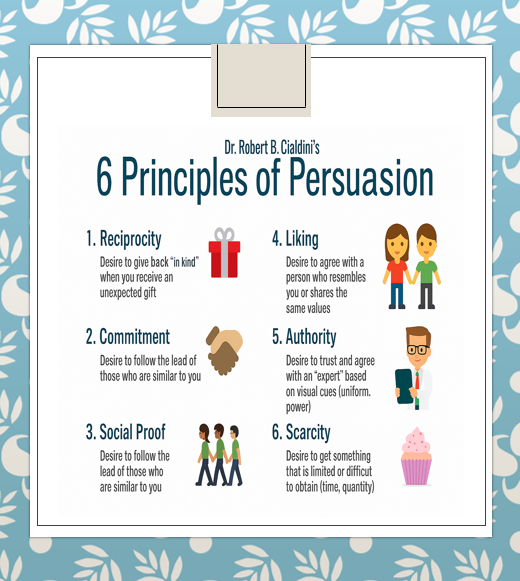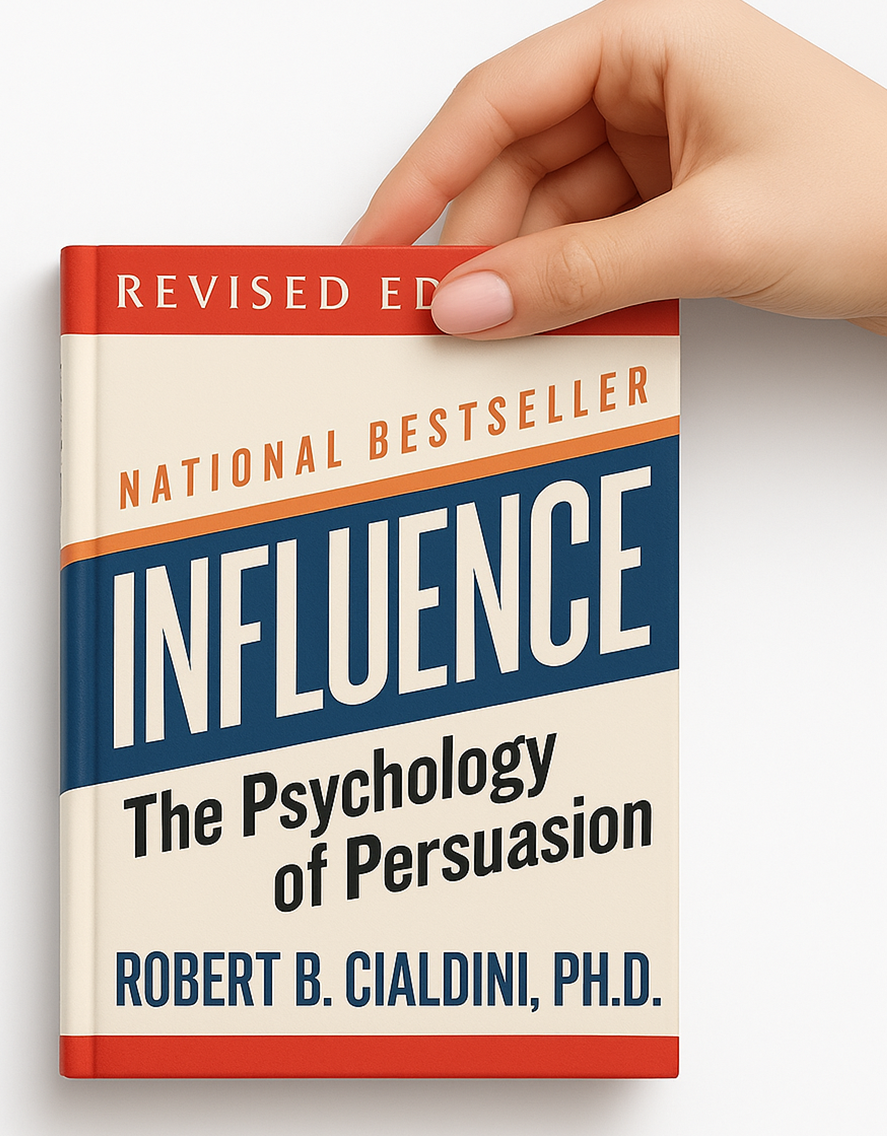Sonu Goswami (SaaS content writer) 6 Psychology Hacks That Skyrocket Product Growth
Unlock 6 psychology hacks that skyrocket product growth. See how Canva, Notion, & Duolingo turn behavioral science into explosive conversions.

How Canva, Notion, and Duolingo use behavioral science to drive conversions — and how you can too
You know that frustrating moment when your product demo goes perfectly, the prospect nods along, says “this looks great,” and then… crickets. No signup. No follow-up. Nothing.
Or when users start your free trial, click around for five minutes, and disappear forever.
Here’s what took me way too long to figure out: people don’t actually buy features. They buy feelings.
Think about your own day. You probably made 50+ small decisions before lunch — which email to answer first, what coffee to grab, whether to click that LinkedIn post. Your brain can’t analyze every choice, so it takes shortcuts. Same thing happens when someone lands on your product page.
Most teams obsess over adding more features or perfecting their design. But the companies that actually grow? They’ve figured out how to work with these mental shortcuts instead of against them.
The Hidden Science Behind Product Success
Here’s the thing nobody talks about: your users want to buy from you, but something’s getting in the way.
I see this all the time. Someone lands on a product page, reads everything, maybe even starts a trial… then just vanishes. It’s not that they don’t need what you’re selling. It’s that their brain is throwing up roadblocks faster than they can process them.
“Is this actually going to work?” “What if I waste time learning another tool?” “Do people like me actually use this?”
These aren’t logical objections you can overcome with better features. They’re emotional speed bumps that happen in seconds, usually without the person even realizing it.
A psychologist named Robert Cialdini spent years studying why people say “yes” to some things and “no” to others. He found six patterns that show up everywhere — from buying groceries to choosing software. The smart product teams I know use these patterns to remove the mental friction that stops good decisions from happening.
Here’s what I’ve learned from watching dozens of companies apply this stuff (and screwing it up myself more times than I care to admit).
1. Reciprocity: Why Free First Works (Canva Example)
The Psychology: Ever notice how you feel weird when someone does you a favor and you can’t return it? That’s your brain keeping score. When someone gives you something valuable upfront, you genuinely want to give back.
Why This Matters: Most products ask for commitment before proving value. Email signup before seeing the good stuff. Credit card before the trial. That’s backwards.
How Canva Did It
Canva didn’t just offer a free trial — they gave users immediate access to thousands of professional templates. Users could create something valuable within minutes, no payment required. That initial gift created a sense of reciprocity that made upgrading feel like returning a favor, not just a transaction.
The result? Over 100 million monthly active users and a $40 billion valuation.
Your 48-Hour Experiment
Add one genuinely useful free resource to your highest-traffic landing page. This could be:
- A template that saves users 2+ hours
- A mini-tool that solves a specific problem
- A checklist that helps them achieve a quick win
Track signup rates from that page versus your control. Most teams see 15–30% increases in conversion.
Pro tip: Make the freebie genuinely useful, not a disguised sales pitch. The goal is to create real value, not just capture emails.
2. Commitment & Consistency: Small Steps Build Big Loyalty (Notion Example)
But free value alone isn’t enough. To keep users engaged, you need micro-commitments…
The Psychology: Once we take an action — especially a public one — we feel pressure to behave consistently with that choice. It’s how our brains maintain a coherent sense of identity.
Why It Works for Products: Small initial commitments make larger future commitments feel natural and consistent, not jarring.
The Notion Strategy
Notion’s genius wasn’t just building a flexible workspace tool. They turned users into creators by encouraging them to build templates, share setups, and contribute to the community. Each small action — customizing a workspace, sharing a template — deepened the user’s identity as a “Notion person.”
These micro-commitments transformed casual users into evangelists who actively recruited others.
Your One-Week Experiment
Before users start their trial, add a small commitment step:
- A 30-second goal-setting questionnaire
- A quick workspace setup process
- A simple customization choice
Measure completion rates for onboarding and week-1 retention. Teams typically see 20–40% improvements in activation when users make small upfront investments.
The key insight: Friction early can reduce friction later. When users invest effort upfront, they’re more committed to getting value from your product.
3. Social Proof: Show Specific Wins From Your Target Users
Micro-commitments work, but users still need to see that people like them are actually succeeding…
The Psychology: Under uncertainty, we look to others for guidance — especially others who seem similar to us. Social evidence often trumps our own analysis.
Why It Works for Products: Generic feature lists tell users what your product does. Social proof shows them who successfully uses it and why.
Beyond Generic Testimonials
Most companies get social proof wrong. They showcase big logos or generic praise. The winners get specific about who benefits and how.
Instead of “Over 10,000 companies trust us,” try “5,200 growth marketers use our A/B testing tools to increase conversion rates by an average of 23%.”
Your 24–72 Hour Experiment
Replace your hero section copy with:
- One specific customer statistic
- One testimonial from your target segment
- One concrete outcome achieved
A/B test this against your current generic messaging. The more specific and relevant to your visitor, the better it performs.
Remember: Segment your social proof. Show SaaS founders testimonials from SaaS founders, show marketers results from marketers. Relevance beats impressiveness.
4. Liking: Make Your Brand Human and Relatable
Social proof shows credibility, but users also need to connect with who’s behind the product…
The Psychology: We say yes to people we like — and we like people who are similar to us, attractive, or who compliment us. This extends to brands and products.
Why It Works for Products: In a world of faceless SaaS tools, showing genuine humanity builds instant connection and trust.
The Founder Story Advantage
Users aren’t just choosing between feature sets. They’re choosing between people and stories they can relate to. A two-sentence origin story often outperforms a paragraph of corporate speak.
Compare:
- Corporate:
- Human:
“We leverage cutting-edge technology to optimize workflow efficiency”
“I built this after spending 3am debugging spreadsheets that should have taken 10 minutes”
Your 48–72 Hour Experiment
Add human elements to your pricing or about page:
- Founder photo with a 2-line story about the problem you solved
- Team photos instead of stock images
- Conversational microcopy instead of corporate language
Track bounce rates and conversion. Authenticity consistently beats polish in building trust.
5. Authority: Borrow Credibility From Experts and Respected Users
Connection builds trust, but sometimes you need external validation to close the deal…
The Psychology: We defer to experts and respected institutions because evaluating every claim ourselves is mentally exhausting. Authority signals help us make faster, more confident decisions.
Why It Works for Products: The right credentials reduce perceived risk and shorten sales cycles.
Authority That Actually Matters
Vanity metrics (“Featured in TechCrunch!”) are less powerful than relevant credentials. A quote from an industry expert or usage by a respected company in your space carries more weight than general press coverage.
Your 24–72 Hour Experiment
Add one measurable authority element:
- “Used by X teams at [relevant company type]”
- An expert quote about your category (not necessarily your product)
- A specific metric validated by a third party
Measure time-to-first-meaningful-action in onboarding. Users who trust your authority typically engage faster and more deeply.
6. Scarcity: Use Real Limitations to Drive Urgency (Duolingo Example)
Authority builds confidence, but sometimes people need a gentle push to act now…
The Psychology: We assign higher value to things that are rare or limited. Scarcity signals that something is either highly useful (high demand) or exclusive.
Why It Works for Products: Genuine scarcity creates urgency without being pushy.
The Duolingo Approach
Duolingo’s streak system creates artificial scarcity around daily progress. Miss a day, lose your streak. This limitation makes each day’s lesson feel more valuable and drives consistent engagement.
The key: their scarcity is real and meaningful, not manufactured urgency.
Your 48-Hour Experiment
Test genuine limitation versus always-available access:
- “Beta access for 50 teams this month” vs. standard signup
- Time-limited bonus features vs. permanent availability
- Exclusive early access vs. general availability
Measure both conversion and post-signup engagement. Real scarcity should improve both metrics.
Warning: False scarcity destroys trust faster than bad UX. Only use limitations that are genuine and meaningful.
Putting It All Together: The Compound Effect
The magic happens when these principles work together. Canva combined reciprocity (free templates) with social proof (user-generated content) and commitment (creation process). Notion layered commitment (template building) with social proof (community sharing) and authority (power user showcases).
Here’s how to start:
Week 1: Pick one principle that aligns with your biggest conversion bottleneck. Run the suggested experiment.
Week 2: Analyze results and implement the winner permanently.
Week 3: Layer in a second principle that complements the first.
Month 2: Test combinations of principles working together.
The Two Non-Negotiable Rules
As you implement these psychological principles, remember:
- Actually solve a real problem first.
- Don’t lie about anything, ever.
I’ve seen teams spend months optimizing their psychology tactics while their product barely works. Here’s the brutal truth: if your tool doesn’t genuinely make someone’s life better, all the behavioral tricks in the world won’t save you. Users aren’t stupid — they figure out pretty quickly if you’ve oversold and under-delivered.
Seriously. I’ve watched companies fake their user counts, make up testimonials, and create artificial urgency that doesn’t exist. It always blows up in their faces. In today’s world where screenshots spread faster than wildfire, one fake social proof element can destroy years of trust-building. Just be honest about what you have and who’s using it.
Your Next Steps
These principles aren’t just theory — they’re practical tools you can implement immediately. The companies dominating their markets aren’t necessarily building better features. They’re building better psychological experiences that align with how humans actually make decisions.
Pick one experiment from this article. Run it this week. Measure the results.
Your users’ brains are already making shortcuts. The question is: are you designing with those shortcuts in mind, or against them?
Ready to turn these insights into action? Choose one experiment from the list above and run it this week. Most teams see results within 48–72 hours.
Follow me if you want more practical growth experiments — no fluff, just what actually works.

TL;DR: 6 Psychology Tricks That Boost Product Growth
- Reciprocity → Give value first (Canva’s free templates)
- Commitment & Consistency → Small steps build big loyalty (Notion’s template-sharing)
- Social Proof → Show specific wins from people like your target user
- Liking → Make your brand human and relatable
- Authority → Borrow credibility from experts and respected users
- Scarcity → Use real limitations to drive urgency (Duolingo streaks)
Pick one. Test it this week. Most teams see results in 48–72 hours.

Want to dive deeper into behavioral product design? The companies mentioned here — Canva, Notion, and Duolingo — publish detailed case studies about their growth strategies. Start there, then experiment with your own variations. I help product makers build more valuable products through better content.

